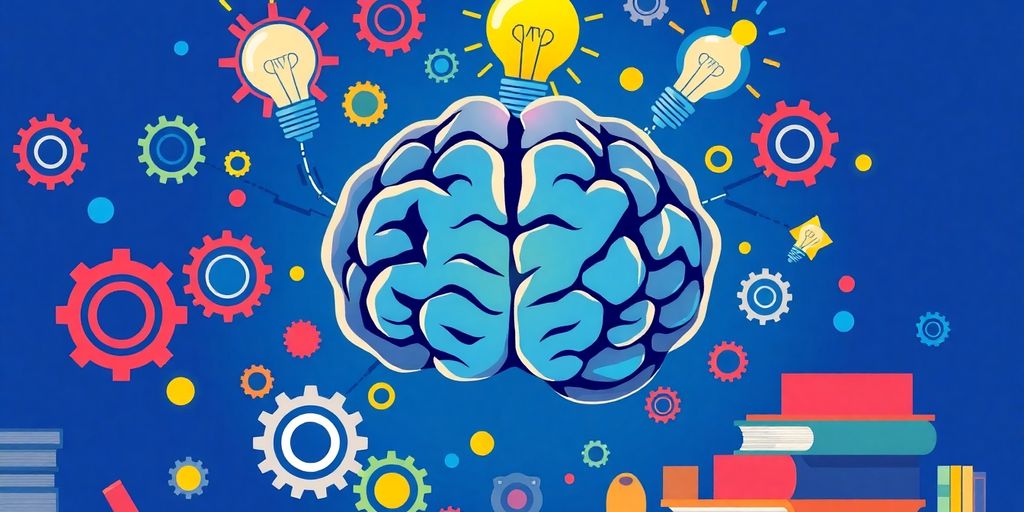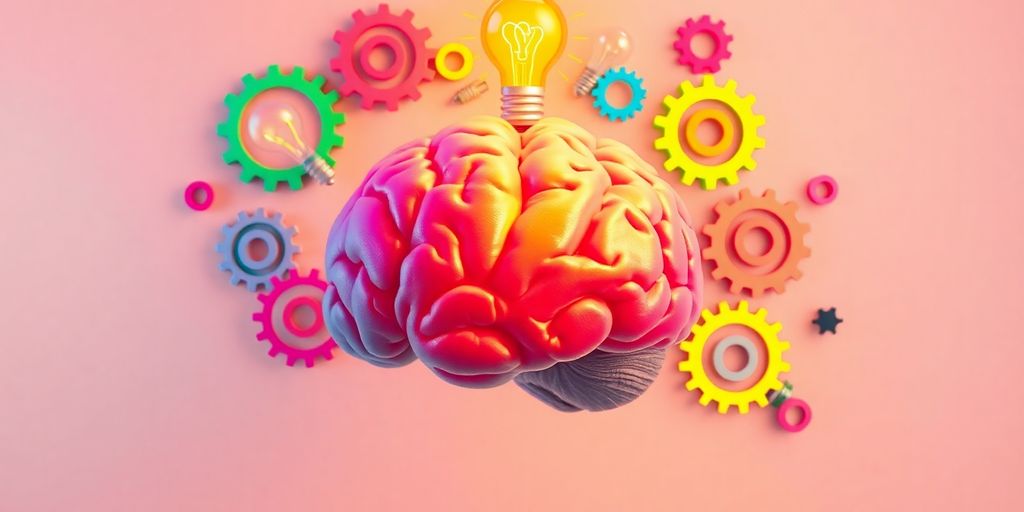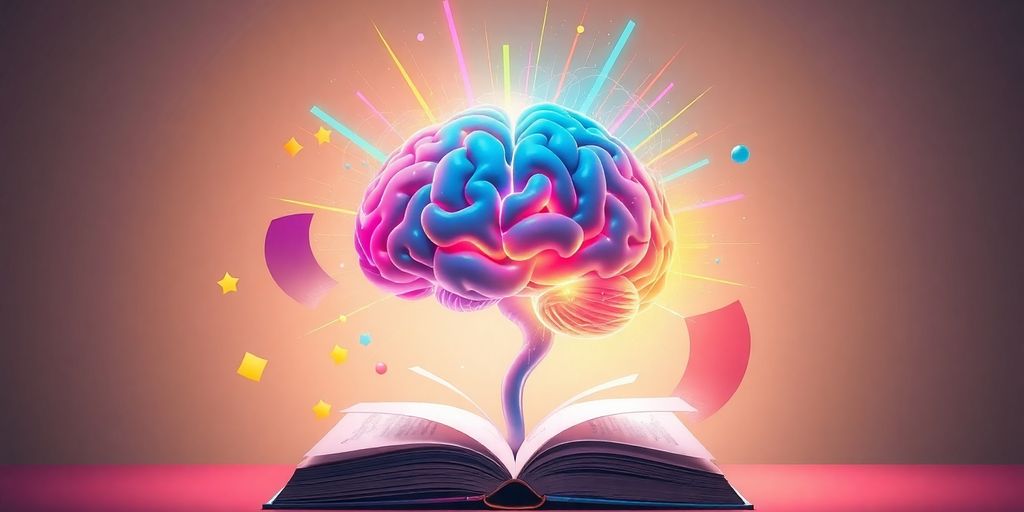In recent years, there’s been a lot of buzz around brain-based learning research. It’s like everyone’s trying to figure out how the brain works to make learning better. This isn’t just some passing trend; it’s really changing how teachers approach education. With all the new discoveries in neuroscience, educators are starting to use these insights to help students learn more effectively. This article dives into the latest findings in brain-based learning and offers some practical strategies for teachers to apply in their classrooms by 2025.
Key Takeaways
- Brain-based learning uses insights from neuroscience to improve educational practices.
- Neuroplasticity, the brain’s ability to change, plays a crucial role in learning.
- Technology is becoming an essential tool in brain-based learning strategies.
- Creating a supportive learning environment can enhance brain-based learning benefits.
- Educators face challenges in implementing these strategies but collaboration can help overcome them.
Understanding Brain-Based Learning: A New Era in Education

The Science Behind Brain-Based Learning
Alright, so brain-based learning is all about using what we know about the brain to make learning better. It’s like taking all this cool science stuff from psychology, neuroscience, and even technology, and using it to figure out how students learn best. Instead of just dumping facts into kids’ heads, brain-based learning tries to understand how the brain actually works. This means thinking about how information is processed, remembered, and used. It’s not just one big theory but a bunch of ideas that help teachers make learning more natural and effective.
How Brain-Based Learning Differs from Traditional Methods
Traditional learning often feels like a one-size-fits-all approach, right? But brain-based learning flips that script. It looks at how each student’s brain is unique and tries to tailor teaching to fit different learning styles. So instead of everyone doing the same thing, teachers can use insights from brain research to create lessons that might involve more hands-on activities or even mindfulness practices. This approach not only helps with learning but also with keeping students engaged and interested.
The Role of Technology in Brain-Based Learning
Technology is like the secret sauce in brain-based learning. With tools like interactive apps and online platforms, teachers can create experiences that are more engaging and responsive to how students’ brains work. This interactive institute dives into current brain research, focusing on attention, working memory, and more, showing how tech can be used to support these areas. Plus, technology can help track progress and adapt lessons in real-time, making it easier to meet each student’s needs. So, while tech can sometimes be a distraction, when used right, it can be a game-changer in the classroom.
Harnessing Neuroplasticity for Student Success
What is Neuroplasticity and Why It Matters
Neuroplasticity is all about the brain’s ability to change and adapt. Think of it like a muscle that gets stronger with exercise. This concept is changing how we think about learning. For a long time, people believed that our brains were set in stone. But now, we know that’s not true. This is a big deal for education because it means that students can improve their learning abilities with the right techniques. Neuroplasticity helps students overcome challenges and unlock their full potential.
Implementing Neuroplasticity in the Classroom
Bringing neuroplasticity into the classroom isn’t as complicated as it sounds. Here are some simple ways teachers can make it happen:
- Personalized Learning: Tailor lessons to fit each student’s needs. This helps target specific areas for improvement.
- Interactive Activities: Use games and activities that challenge students’ brains in new ways.
- Consistent Practice: Encourage regular practice of skills to reinforce learning and make it stick.
By focusing on these strategies, educators can create a more dynamic and inclusive learning environment.
Success Stories: Neuroplasticity in Action
There are plenty of success stories when it comes to neuroplasticity in education. Schools around the world are seeing amazing results by understanding and harnessing neuroplasticity. For instance, some programs have helped students with learning disabilities improve their reading and math skills significantly. These stories show that with determination and the right approach, students can achieve great things.
Embracing neuroplasticity in education is like opening a door to endless possibilities. It allows educators to unlock students’ full potential, fostering a more dynamic and effective learning environment.
Practical Strategies for Educators: Applying Brain-Based Learning
Creating a Brain-Friendly Classroom Environment
Creating a classroom that supports brain-based learning is all about setting the right atmosphere. The goal is to make students feel comfortable and engaged. Start by arranging seating in a way that encourages collaboration and discussion. Use colors and decorations that stimulate the mind but aren’t too distracting. Lighting is another biggie; natural light is great if you can get it. Also, think about the noise level—some kids work better with a little background buzz, others need quiet. The key is flexibility.
Incorporating Mindfulness and Relaxation Techniques
Mindfulness isn’t just a buzzword; it’s a practical tool for the classroom. Teach students simple breathing exercises or short meditation sessions to help them focus better. These techniques can reduce stress and improve concentration, making it easier for students to absorb information. You might even start each class with a quick mindfulness exercise to set the tone for learning. It’s amazing how a few minutes of calm can transform the whole day.
Using Multi-Sensory Approaches to Enhance Learning
Multi-sensory learning is all about engaging more than one sense at a time. This can be as simple as combining visual aids with verbal instructions or using music to reinforce a concept. For example, when teaching a science lesson, you might use videos, hands-on experiments, and group discussions to cover the material. This approach not only caters to different learning styles but also helps reinforce the material. It’s like giving the brain multiple ways to remember the same thing.
Imagine a classroom where every student is engaged and learning feels like an adventure. That’s the power of brain-based strategies. They don’t just teach; they transform the educational experience.
The Impact of Brain-Based Learning on Student Well-Being
Emotional and Social Benefits of Brain-Based Learning
Brain-based learning isn’t just about improving test scores; it’s also about nurturing the whole student. One of the standout benefits is how it boosts students’ emotional and social well-being. By aligning teaching methods with how the brain naturally works, students often find learning more engaging and less stressful. This can lead to a more positive attitude towards school and learning in general.
- Enhanced Emotional Regulation: Students learn to better manage their emotions, which can reduce anxiety and improve classroom behavior.
- Improved Social Skills: When students understand and manage their emotions, they often interact more effectively with peers.
- Greater Empathy: Brain-based learning can foster a sense of understanding and compassion among students, creating a supportive classroom environment.
Embracing brain-based strategies can transform the classroom into a place where students feel valued and understood, paving the way for academic and personal growth.
How Brain-Based Learning Supports Mental Health
Mental health is a growing concern in schools today, and brain-based learning offers some promising solutions. By focusing on how students’ brains function, educators can tailor their approaches to reduce stress and promote mental well-being. This isn’t just about avoiding burnout; it’s about creating a nurturing environment where students can thrive.
- Stress Reduction: Techniques like mindfulness and relaxation exercises can be integrated into the curriculum to help students manage stress.
- Building Resilience: Encouraging students to take on challenges and learn from mistakes helps build resilience, which is crucial for mental health.
- Positive School Environment: A brain-based approach can contribute to a more positive school atmosphere, reducing bullying and fostering inclusivity.
Building Resilience Through Brain-Based Strategies
Resilience is the ability to bounce back from setbacks, and it’s a skill that brain-based learning can help develop. By understanding how the brain adapts and grows, educators can create strategies that encourage resilience in students.
- Growth Mindset: Teaching students about neuroplasticity and the brain’s ability to change can promote a growth mindset, encouraging them to see challenges as opportunities to learn.
- Problem-Solving Skills: Activities that require critical thinking and problem-solving can help students develop resilience as they learn to navigate complex tasks.
- Supportive Feedback: Constructive feedback helps students learn from their mistakes and persist in the face of difficulties.
Incorporating these strategies into the classroom not only supports academic success but also prepares students for the challenges they’ll face outside of school. Brain-based learning is a powerful tool for enhancing student well-being, equipping them with the emotional and social skills they need to succeed in life.
Future Trends in Brain-Based Learning Research
Emerging Technologies in Brain-Based Education
In 2025, we’re seeing some seriously cool tech shaking up brain-based education. AI is teaming up with neuroscience to create personalized learning experiences like never before. Imagine a classroom where lessons adapt in real-time based on each student’s brain activity. It’s not science fiction—it’s happening now. As AI integrates with neuroscience, we’re unlocking new ways to understand and enhance the learning process.
Predictions for Brain-Based Learning in 2025
Looking ahead, there are some exciting predictions for brain-based learning. First, expect more schools to embrace these methods as research shows their effectiveness. Secondly, neuroplasticity will play a big role, helping students overcome learning challenges by literally reshaping their brains. Lastly, we’ll see a shift towards more holistic education, focusing not just on academics but also on emotional and social skills.
The Global Impact of Brain-Based Learning Research
Brain-based learning isn’t just a local trend. It’s going global, with countries around the world adopting these strategies to improve education systems. This approach is helping to bridge educational gaps, offering all students, regardless of background, the chance to succeed. As this research scales, it’s set to transform how we think about education, making learning more inclusive and effective for everyone.
Brain-based learning is not just a passing trend; it’s the future of education. By understanding and leveraging how our brains work, we’re paving the way for a more inclusive and effective learning environment for all students.
Overcoming Challenges in Brain-Based Learning Implementation
Addressing Skepticism and Misconceptions
Brain-based learning sounds pretty cool, right? But not everyone’s on board. Some folks are skeptical, thinking it’s just another educational fad. The key is to clear up misconceptions. Start by explaining the science behind it. Share stories of how it’s helped students. Show how it’s not just about fancy brain scans but real-world results. Sometimes people just need to see it to believe it.
Training Educators in Brain-Based Techniques
Teachers are at the heart of this approach. But they need the right tools and training. It’s not enough to just hand them a book and say, "Go figure it out." They need workshops, ongoing support, and a community to bounce ideas off.
- Host regular training sessions.
- Provide access to online courses.
- Encourage collaboration among teachers.
Adapting Brain-Based Learning for Diverse Classrooms
Every classroom is different. You’ve got students from all walks of life, each with their own learning style. Adapting brain-based learning means being flexible. It’s about meeting students where they are and tailoring approaches to fit their needs. This might mean extra resources for some or different teaching methods for others.
Embracing diversity in the classroom is not just about recognizing differences but using them as strengths. With brain-based learning, educators can create a more inclusive and effective learning environment.
In the end, overcoming these challenges isn’t about doing everything perfectly. It’s about making progress and preparing students for the future. Educators should emphasize collaboration and help students learn through their strengths, setting them up for success in a world that’s always changing. Learn more about preparing students for future challenges.
Collaborative Efforts in Advancing Brain-Based Learning
Partnerships Between Neuroscientists and Educators
In the world of education, one of the most exciting developments is the collaboration between neuroscientists and educators. This partnership is like a meeting of the minds, where science and teaching come together to create better learning experiences. Neuroscientists bring insights into how our brains work, while educators use this knowledge to shape classroom strategies. Together, they can design educational programs that are more in tune with how students naturally learn.
Community Involvement in Brain-Based Initiatives
Community involvement plays a crucial role in the success of brain-based learning initiatives. Schools, parents, and local organizations can work hand-in-hand to foster environments where learning thrives. When everyone in the community gets involved, it creates a support system that encourages students to explore and grow. This collective effort helps to ensure that the benefits of brain-based learning are accessible to all students, not just a select few.
Sharing Success Stories and Best Practices
Sharing success stories and best practices is key to spreading the word about brain-based learning. When educators and schools share their experiences and what works for them, it helps others to learn and adapt these strategies in their own settings. This exchange of ideas can happen through workshops, conferences, or even informal meet-ups. It’s all about building a network of educators who are passionate about enhancing education through brain-based methods. By learning from each other, we can make brain-based learning a standard practice in classrooms everywhere.
Wrapping It All Up
So, here we are at the end of our journey through the world of brain-based learning. It’s been quite a ride, hasn’t it? We’ve peeked into the latest research and explored strategies that could really shake things up in classrooms by 2025. The big takeaway? Understanding how our brains work can totally change the way we teach and learn. It’s like having a secret map to unlock potential in every student. Sure, it might seem a bit daunting at first, but the possibilities are endless and exciting. As educators, embracing these insights means we’re not just teaching facts; we’re helping students build skills for life. So, let’s get out there and make learning as brain-friendly as possible. The future’s looking bright, and it’s all in our hands!
Frequently Asked Questions
What is brain-based learning?
Brain-based learning is a way of teaching that uses what we know about how the brain works to help students learn better. It involves using techniques that align with how our brains naturally process and remember information.
How does brain-based learning differ from traditional teaching methods?
Unlike traditional methods that often focus on memorization, brain-based learning focuses on understanding how the brain learns best. This might include using more hands-on activities, encouraging movement, or integrating technology.
Why is neuroplasticity important in education?
Neuroplasticity is the brain’s ability to change and adapt. In education, it means that students can improve their learning skills over time with the right activities and support, making learning more effective.
How can teachers create a brain-friendly classroom?
Teachers can make classrooms brain-friendly by using bright colors, keeping the environment positive and encouraging, and allowing breaks for movement. It’s also helpful to use different senses in lessons, like seeing, hearing, and touching.
What role does technology play in brain-based learning?
Technology can support brain-based learning by providing interactive tools that engage students. It can offer personalized learning experiences and help students visualize complex concepts in a way that’s easier for the brain to understand.
How can brain-based learning improve student well-being?
Brain-based learning can boost student well-being by reducing stress and anxiety. It encourages social interaction and emotional understanding, helping students feel more connected and supported in their learning environment.






